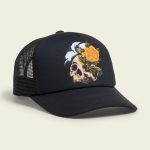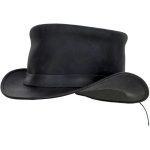High fashion fabrics are the cornerstone of the couture world, defining the elegance, quality, and style of some of the most renowned designs in the fashion industry. When we think of high fashion, we often envision the glamorous runways of Paris, Milan, and New York, where stunning garments display exceptional craftsmanship and luxurious textiles. The choice of fabric can make or break a design, and designers frequently consider various factors—such as texture, drape, color, and finish—when selecting materials for their collections. In this detailed exploration of high fashion fabrics, we will discuss various types of luxurious textiles, their characteristics, and how they influence the overall aesthetic of high-end fashion items. Additionally, we will explore the importance of fabric selection in design, the sustainability challenges within the fabric industry, and the role high fashion fabrics play in defining trends. Through this journey, we aim to provide a thorough understanding of how these materials contribute to the artistry of fashion design.

The Essence of High Fashion Fabrics
High fashion fabrics serve as the life force of haute couture. Their elegance and beauty inspire designers and impact the fashion world greatly. Understanding the unique qualities of various fabrics allows designers to express their creativity and vision effectively.
The Characteristics of High Fashion Fabrics
Different high fashion fabrics boast distinctive qualities that make them suitable for specific designs. Some intrinsic characteristics include:
- Texture: The feel of a fabric can evoke various emotions, enhance comfort, and influence the overall design. Textures may range from smooth silks to rougher wools.
- Drape: The way a fabric hangs can drastically alter the silhouette of a garment. Fabrics with a softer drape may flow elegantly, while stiffer materials may hold their shape better.
- Weight: Fabric weight can impact seasonal wearability. Lightweight materials, such as chiffon, are ideal for summer, whereas heavier options, like brocade, lend well to winter garments.
- Versatility: Some fabrics are versatile enough to be styled in various ways, while others are specific to certain kinds of garments based on their physical properties.
Each of these characteristics plays an essential role in how high fashion fabrics are selected and utilized by designers.
Types of High Fashion Fabrics
The world of high fashion fabrics is diverse and rich, offering various materials that can elevate design aesthetics. Below, we will explore several types of popular high fashion fabrics.
Silk
Silk remains one of the most coveted high fashion fabrics due to its luxurious feel and elegant appearance. This natural fabric is created from the fibers produced by silkworms. Some key attributes of silk include:
- Luster: The smooth surface of silk reflects light beautifully, giving it a radiant quality that enhances garments, particularly evening wear.
- Softness: Silk feels exquisitely soft against the skin, providing unparalleled comfort—a feature that high fashion consumers highly appreciate.
- Drape: The fluid drape of silk lends itself well to flowing designs, creating ethereal silhouettes perfect for dresses and blouses.
While silk is undoubtedly a classic high fashion fabric, it also requires careful handling and cleaning to maintain its quality.
Velvet
Velvet is another luxurious fabric that has fascinated fashion designers for centuries. Made from a blend of fibers, usually with a rich mixture of cotton, silk, or polyester, velvet stands out for its unique qualities:
- Texture: Velvet finishes have a deep pile that creates a soft, tactile surface, providing a sumptuous feel that elevates casual wear to high fashion.
- Visual Depth: Its distinctive texture allows colors to appear richer, making velvet an exceptional choice for statement pieces such as evening gowns and outerwear.
- Warmth: Velvet typically has a heavier weight, making it ideal for colder seasons. Its insulating properties provide comfort during winter months.
Its versatility allows velvet to range from dramatic evening wear to chic, everyday pieces.
Brocade
Brocade is a richly decorative fabric often characterized by complex patterns woven into the material using metallic threads. It has a long-standing history in high fashion and reflects opulence and extravagance. Attributes include:
- Intricate Patterns: The visual complexity of brocade adds depth to garments, making them standout pieces. These patterns often draw on historical designs, which imbue the fabric with heritage.
- Structure and Weight: Due to its heavier construction, brocade holds its shape exceptionally well, making it a popular choice for structured garments like ball gowns and formal wear.
- Luxurious Feel: Brocade is known for its lavish texture, making it synonymous with high fashion and haute couture.
Designers often utilize brocade for garments intended for special occasions or fashion statements.
Chiffon
Chiffon, a lightweight, sheer fabric, brings an air of romanticism to high fashion garments. Its delicate nature can be both enchanting and versatile. Key characteristics include:
- Lightness: Chiffon is incredibly light and airy, allowing for flowing silhouettes that evoke a sense of freedom in movement.
- Layering Capacity: Designers often use chiffon for layering, as it lends itself beautifully to draped and layered looks, creating visual intrigue without bulk.
- Soft Sheen: The semi-transparent quality of chiffon provides a subtle sheen that enhances the visual appeal of garments, especially when combined with other fabrics.
Chiffon is frequently used in dresses, blouses, and skirts, providing a soft, ethereal quality.

Organza
Organza is a thin, crisp fabric that offers a luxurious feel while maintaining structure. A staple in bridal fashion, organza provides several amazing qualities:
- Crispness: Organza holds its shape exceptionally well, making it ideal for structured designs that require volume and form, such as ball gowns and layered skirts.
- Sheen and Transparency: The glossy surface and unique translucency of organza elevate the aesthetic, creating an ethereal effect when layered with other fabrics.
- Lightweight: Despite its structure, organza remains lightweight, allowing for graceful movement without feeling bulky.
Fashion designers often embrace organza for making an unforgettable impression at special events.
The Role of Fabric Selection in Fashion Design
High fashion fabrics are more than just components of a garment; they largely dictate the mood, style, and function of the entire piece. Designers carefully consider fabric selection when creating new collections, utilizing textiles to express their artistry.
Aesthetic Appeal
One of the primary roles of high fashion fabrics is to enhance the aesthetic appeal of a garment. The choice of color, texture, and pattern can evoke specific emotions. For example, silk creates an elegant, romantic feel, while structured fabrics like brocade can convey opulence and sophistication. These characteristics allow designers to communicate their vision to the audience.
Functionality and Wearability
Fashion must strike a balance between aesthetics and functionality. Designers consider how the garment will be worn and under what conditions. For instance, a lightweight chiffon dress may look beautiful for summer events, but it wouldn’t provide sufficient warmth in winter.
Trends and Innovation
Fashion is inherently tied to trends; thus, the choice of high fashion fabrics evolves with each season. Designers continuously engage with innovative materials to push aesthetic boundaries. Sustainable fabrics, performance textiles, and eco-friendly options shape contemporary fashion landscapes. This dynamism keeps the industry fresh and exciting.
Cultural Influence
Cultural heritage and historical contexts can heavily influence a designer’s choice of fabrics. From traditional silk weaving techniques in Asia to the significance of textiles in African culture, designers draw inspiration from their surroundings. This connection leads to a rich tapestry of influences, shaping not only the fabric choice but the entire design ethos.
Sustainable Practices in High Fashion Fabrics
As the fashion industry becomes increasingly aware of its environmental impact, sustainable practices in fabric production have gained attention. Designers recognize the need to innovate and prioritize eco-friendly fabrics in their collections.
Organic and Natural Fabrics
Switching to organic and natural fabrics is a vital step many high fashion brands are taking. Cotton, linen, and bamboo can offer luxurious alternatives without harming the environment. These materials often require less water and pesticide usage during their growth, making them more sustainable.
Recycled Materials
Embracing recycled materials represents another avenue for sustainable innovation in high fashion fabrics. Brands increasingly utilize fabrics made from recycled plastics, waste textiles, and regenerated fibers to create stylish, eco-friendly products. Consequently, this practice not only reduces waste but also contributes to the conservation of resources.
Slow Fashion Movement
The slow fashion movement emphasizes quality over quantity in the fabric and design. High fashion designers embrace this philosophy by creating timeless pieces that endure trends and constructed with sustainable practices. This movement seeks to promote ethical consumption and minimize waste within the industry.
Transparency in Supply Chains
Consumers are becoming more educated about the origins of their clothing, leading to a demand for transparency in the fashion supply chain. High-end brands are responding by providing detailed information about fabric sources and production processes. This approach fosters consumer trust and encourages responsible buying behavior.
The Impact of High Fashion Fabrics on Trends
The choice of high fashion fabrics can have a profound impact on current fashion trends. Designers shape collections around specific materials, drawing attention to their versatility and appeal. Below are some ways that high fashion fabrics influence the industry.
Seasonal Trends
Hats and garments are often reflective of seasonal trends, which rely on various fabric characteristics. For instance, lighter silks and chiffon fabrics dominate spring and summer collections, while heavier wools and brocades find their place in fall and winter wardrobes. Consequently, these seasonal shifts create opportunities for designers to showcase different high fashion fabrics at various times of the year.
Celebrity Influence
Celebrities play a pivotal role in popularizing high fashion fabrics through red carpet appearances and public events. When high-profile individuals wear garments made from specific luxurious materials, they often inspire trends among consumers, reverberating throughout the fashion world.
Fashion Weeks and Runway Shows
During major fashion weeks in cities like Paris, Milan, and New York, designers unveil their collections, showcasing unique fabrics and innovative textiles. The runway serves as a critical platform for highlighting high fashion fabrics and their potential. These events set the tone for subsequent trends in retail.
Collaborations and Capsule Collections
Collaborations between fashion designers and established brands can give rise to unique high fashion fabrics. Capsule collections often introduce limited-edition pieces that utilize specific textiles to create a buzz and drive consumer interest. This partnership strategy pushes the boundaries of fabric innovation and aesthetics.

Conclusion
High fashion fabrics are the lifeblood of the couture world, influencing design, aesthetics, and trends throughout the industry. Understanding the components that make up these luxurious materials allows for a deeper appreciation of their influence on fashion. From silk and velvet to brocade and chiffon, each fabric has unique qualities that allow designers to bring their visions to life.
As fashion continues to evolve, the importance of sustainability and ethical practices becomes increasingly prominent. Designers who embrace these principles create beautiful garments while prioritizing our planet.
By understanding the world of high fashion fabrics, consumers can make informed decisions about their clothing choices and engage more deeply with the fashion industry. Whether you are a fashion enthusiast or simply enjoy wearing high-quality garments, knowledge of these fabrics will elevate your appreciation for the artistry involved in high fashion.

